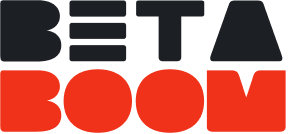Create a Timeline and Plan
Although it’s your decision ultimately how you spend investors’ money, it’s not a really blank check. You will be judged, harshly, by your next round of investors, who will critique how you spent your pre-seed investment dollars.
At the end of the day, future investors will want to see that however you spent your pre-seed capital, you strengthened your product-market fit and grew your revenue. If you invested a lot of money into marketing, for example, and your revenue hardly budged, future investors will have little faith that you won’t squander their investment too.
It’s critical, therefore, to create a solid plan that includes key milestones, when you expect to hit those milestones, and how you plan to make them happen. Your plan might change, but if you have no plan, you will be much more likely to waste money and lose momentum.
It is also a good idea to work backward from where you need your business to be to have a strong shot at raising the next round of funding–probably a seed round. What those milestones should be will depend on a number of factors such as your industry, etc., but you can ask your current investor or future seed investors what they might like to see.
Effective Use of Capital
To raise a seed round, you will need to either show outstanding revenue traction or user engagement. Any spending that does not get you closer to those goals is a waste of money.
Once again, you are constantly competing with scores of other startups, so it’s not enough to get some revenue or some user engagement. Your revenue traction or user engagement must be stronger than the next 99 startups fighting for seed capital.
Don’t Paint Yourself into a Corner
If you do not achieve impressive milestones with your pre-seed funding, you will find yourself in a really difficult situation. Future seed investors will have a hard time believing that if you fail to hold up your promise with your pre-seed investors, things will be any different with them.
Three Biggest Areas of Waste
Without a doubt, the two areas where I have seen founders waste the most money are engineering and marketing.
Solving Imaginary Problems
Despite advice to the contrary, founders constantly go on Quixotic product-building journeys that gobble up their cash and lead to little or no tangible return. These founders do not talk to users or test designs or prototypes, they just build whatever is in their head.
Obsessing Over Meaningless Details
Another trend that I’ve seen too many times to count is founders obsessing over meaningless product details that don’t actually affect user engagement or revenue. There are infinite such details, and they will happily burn through limitless piles of cash.
Going All in on Ineffective Marketing
The final pattern that seems to consistently repeat itself is founders spending big on unproven marketing or when marketing is not needed. I know of one startup that spent $250,000 of a $750,000 pre-seed raise on a fancy marketing company that brought in a few hundred dollars–yes hundred–of business. Ouch! Try explaining that to a seed investor.
At the pre-seed stage, marketing starts with disciplined experimentation. No startup that I have ever heard of or seen has nailed its messaging and channel on the first go-around. Instead, it takes months of systematic experimentation to find the messaging that resonates most and the channel (print ads, conferences, podcasts, Google ads, etc.) that reaches your audience best.
Running out of Money = Death
I know a very successful startup founder who sold his company for hundreds of millions of dollars in the past. He is launching a new startup and is barely spending any money as he and his co-founders are getting it off the ground.
They have millions of dollars in the bank, but they are just paying the three of them minimal salaries. Their team consists of the CEO, an engineer, and a marketer. They refuse to increase their spend until they clearly have a product that customers can’t get enough of and until they have nailed their marketing.
Why?
Because this founder has been through it, and he knows full well that if they don’t deliver results on this first round of investment and run out of money, it’s game over.
Husband your resources. Don’t run out of money.
Investor Relations
Once again, fundraising is sales. And as any great salesperson will tell you, success in sales depends on relationship building.
Think about it. You are essentially asking investors to make a purchase worth hundreds of thousands of dollars–maybe millions of dollars. In this case, they are purchasing shares in your company.
If you had to make a million-dollar purchase from someone you barely met, wouldn’t you want to get to know them first? Wouldn’t you also want to really inspect what they are selling? I hope you would!
Immediately Start Growing Your Seed Investor Network
After you raise your pre-seed, you should immediately start growing and engaging your seed-stage investor network. I don’t mean drop everything else, neglect building your business, and just hang out with investors.
What I do mean is that every week you should add at least one seed-stage investor to your network. You should also engage your seed-stage investors once a month or at least once a quarter. This can be straightforward. Send a monthly update to your list of target seed investors, and try to do a quarterly update call with them.
Preparing for a Seed Round
The number one thing that all investors want is to make a return on their investment. The last thing they want is to lose their investment. They are constantly balancing risk and reward.
Reduce Risk
First, show that you can turn investment into progress. If you can’t show a history of doing that, what hope do seed-stage investors have that you won’t waste their investment? Make a case that you are an outstanding steward of invested dollars and have a history of adroitly turning funding into milestones and traction.
Second, show that you have built something that people really love. As mentioned in the history of pre-seed section, the seed investors have higher and higher expectations. It used to be that you could raise a seed on an idea, but no more. Nowadays, you need to show proof that at least some group of users are fanatical about your product.
Third, show that people are happy to pay money for your product. Even if users love your product, sometimes it’s hard to get them to pay. That’s. a huge risk for investors.
Highlight Reward
An advisor once told me that you have to tickle an investor’s greedy nerve. In other words, you have to make them believe that your company will make tons of money and that they will make a big return on their investment. The best way to do this is by both showing growth momentum and articulating how big your business can get.
To show growth momentum, you should highlight both how much money your business is making as well as how fast your revenue is growing. If that’s not possible, you can also highlight usage and user growth.
At the same time, you need to quantify how much revenue your business could make every year. The best way to do that is to back out how many customers you need to serve at your current revenue model to get to $100 million in annual revenue. Further, you should have a detailed and reasonable plan of how you plan to get there.














